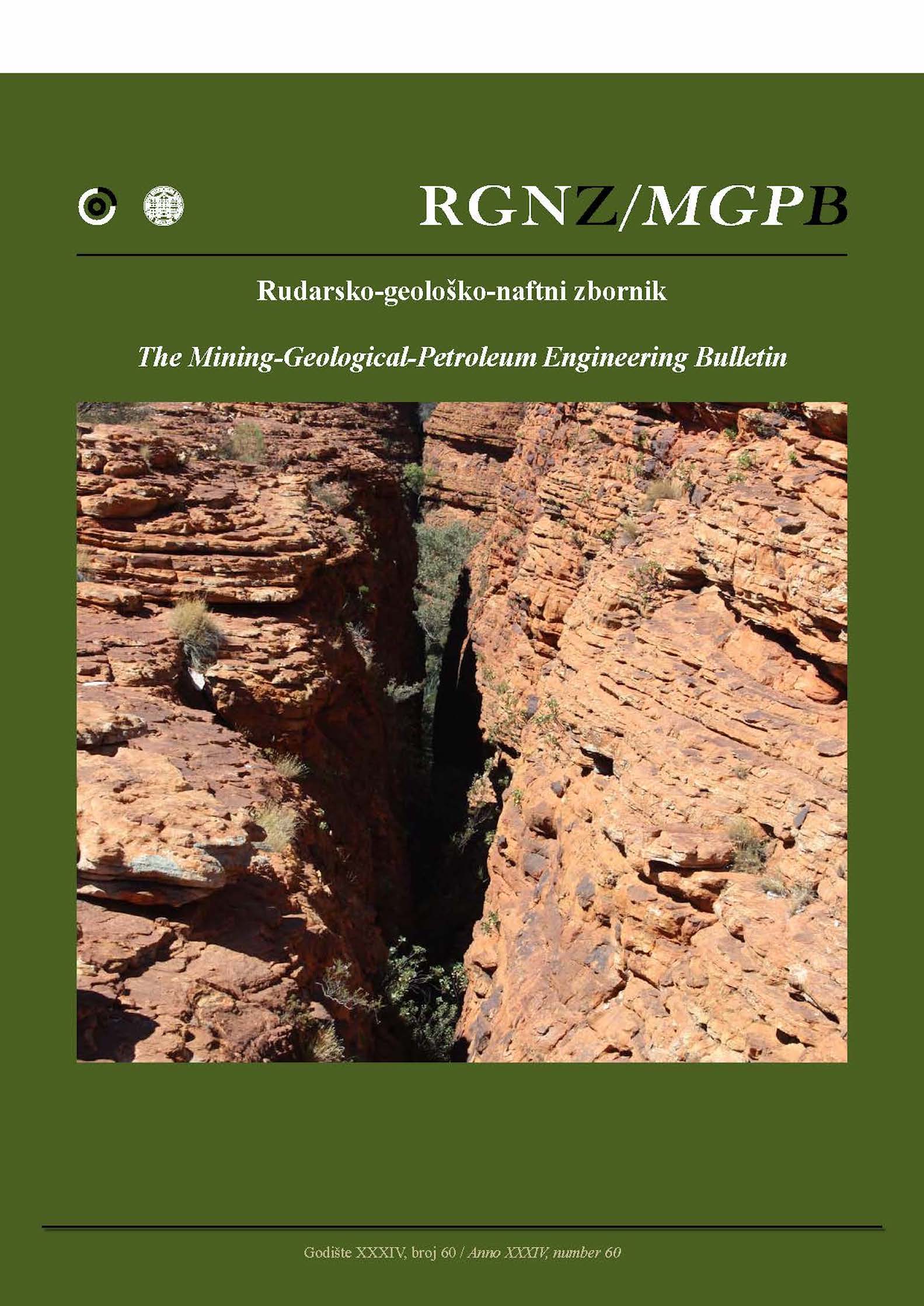Impact of drilling angle on blasting costs in surface works
DOI:
https://doi.org/10.17794/rgn.2022.4.6Keywords:
Drilling angle, Blasting cost, Surface exploitation, Explosive, BlastholeAbstract
Removal of rock masses or their use with surface exploitation requires that this work be done at the lowest possible cost. The reduction of operating costs is done by analyzing each work action, working method, and the possibility of changing them, to have an impact on reducing costs. The drilling angle is one of the most important factors during surface exploitation by blasting. By changing the drilling angle, we achieve a reduction of the total drilling length, to have a reduction of the amount of explosives and other changes during the blasting process which do not greatly affect the cost of blasting. Determining the impact of drilling angle on the cost of blasting is determined by analytical methods and by comparing the results of applied drilling angle methods. During the analytical analysis of the blasting data and the comparison of their results, it was achieved to determine the change in the cost of blastings depending on the drilling angle, and it resulted that for the removal of 200000 (m3) rock material, 356167.98 (€) can be saved, applying the 900 angle drilling method. This change of drilling angle from the projected angle of 630 to the angle of drilling 900, reduces the total cost of blastings by about 10.69 (%).
Downloads
Published
How to Cite
Issue
Section
License
Copyright (c) 2022 authors and journal

This work is licensed under a Creative Commons Attribution 4.0 International License.
Creative Commons-BY
Authors who publish with this journal agree to the following terms:
In agreeing this form, you certify that:
- You read the ethical codex of the RGN zbornik available at journal web.
- You submitted work is your original work, and has not previously been published and does not include any form of plagiarism.
- You own copyright in the submitted work, and are therefore permitted to assign the licence to publish to RGN zbornik.
- Your submitted work contains no violation of any existing copyright or other third party right or any material of an obscene, libellous or otherwise unlawful nature.
- You have obtained permission for and acknowledged the source of any illustrations, diagrams or other material included in the work of which you are not the copyright owner.
- You have taken due care to ensure the accuracy of the work, and that, to the best of your knowledge, there are no false statements made within it.
- All co-authors of this submitted work are aware of, and in agreement with, the terms of this licence and that the submitted manuscript has been approved by these authors.
Publication licence
You retain copyright in your submitted work, according to journal license policy (CC-BY). By signing this form you agree that RGN zbornik may publish it under the publication licence. In summary the licence allows the following:
Anyone is free:
- To copy, distribute, display, and perform the work.
- To make derivative works.
Under the following conditions:
- The original author must always be given credit.
- The work may not be used for commercial purposes.
- If the work is altered, transformed, or built upon, the resulting work may only be distributed under a licence identical to this one.
Exceptions to the licence
In addition to publishing the work printed under the above licence, RGN zbornik will also enable the work to be visible online.
The journal editorial can change the licence rules anytime but it cannot retroactively restrict author(s) rights.


